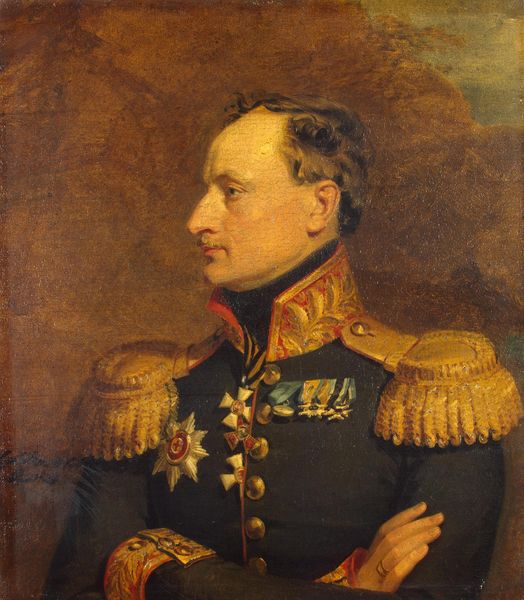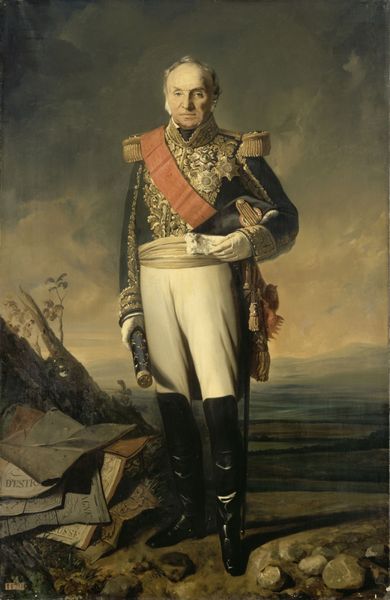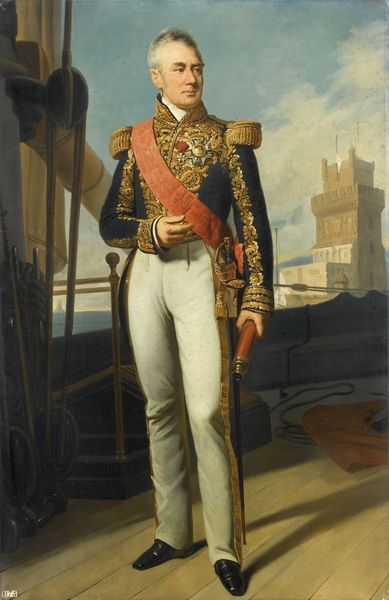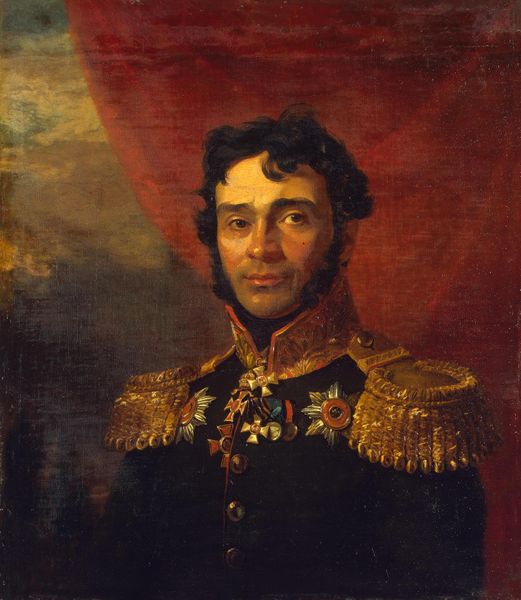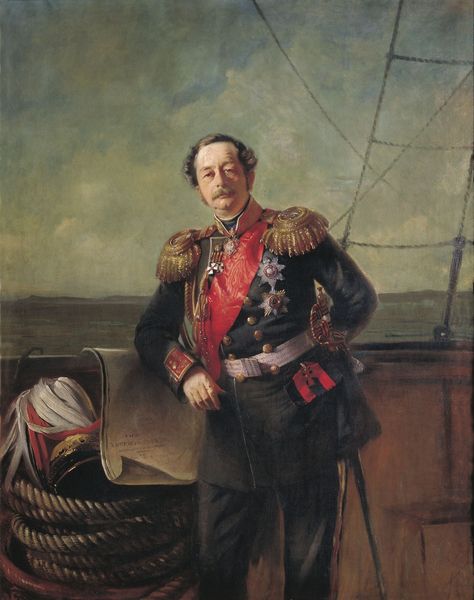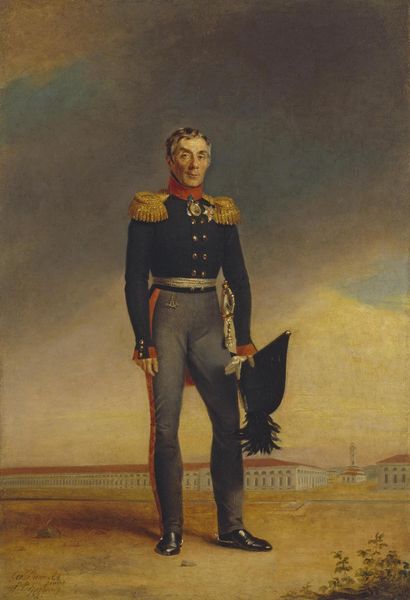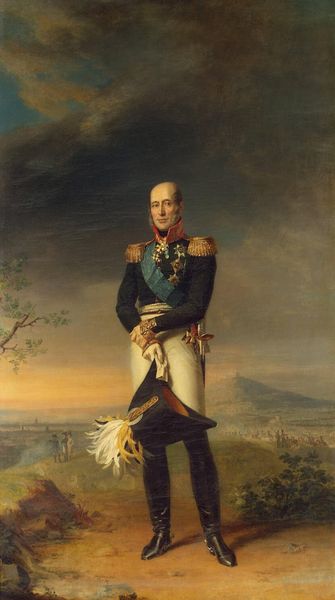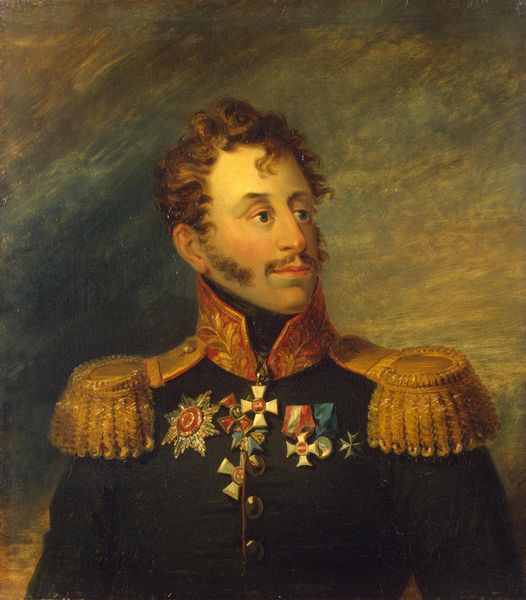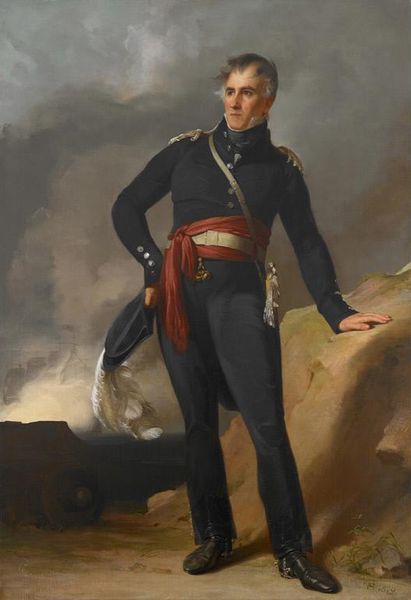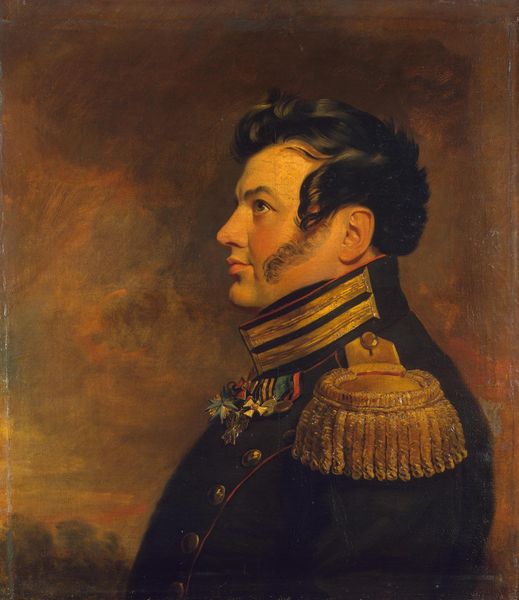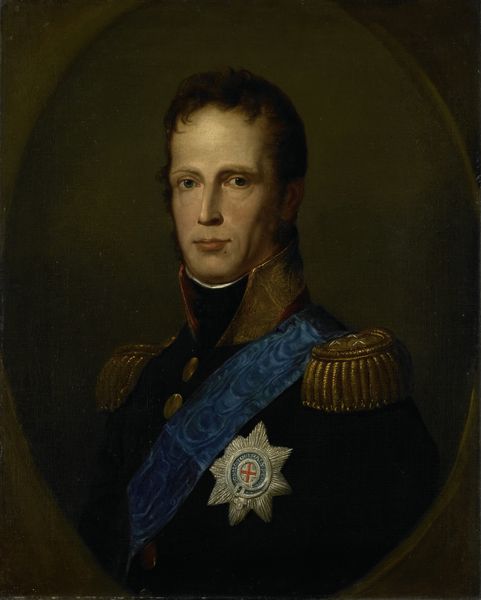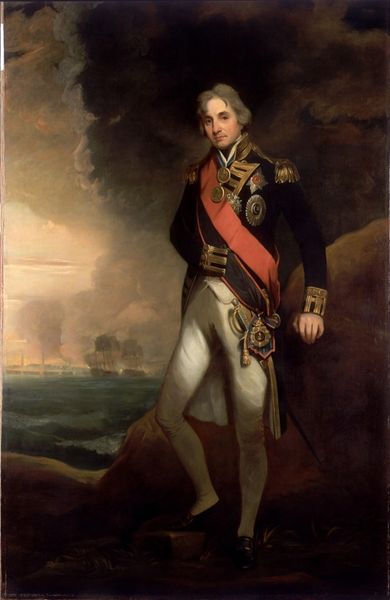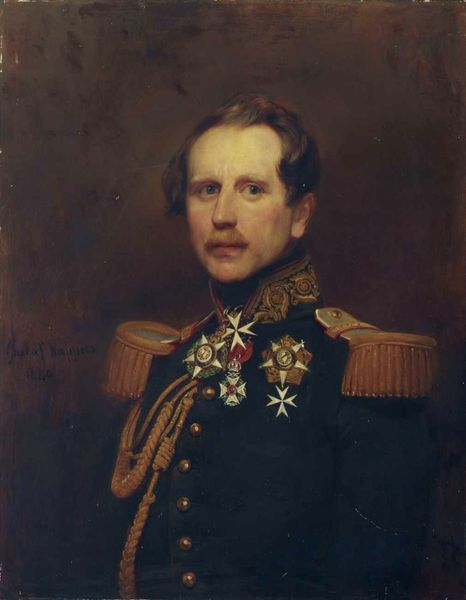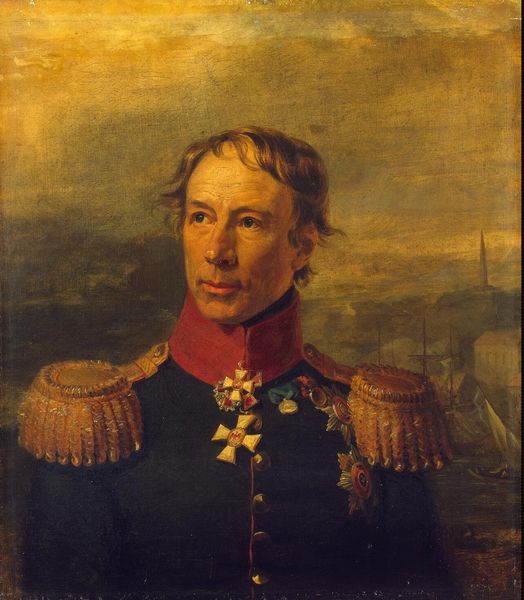
#
charcoal drawing
#
possibly oil pastel
#
oil painting
#
portrait reference
#
underpainting
#
painting painterly
#
portrait drawing
#
portrait art
#
watercolor
#
digital portrait
Dimensions: height 15 cm, width 11.5 cm, height 28.6 cm, width 24.5 cm, depth 3.2 cm
Copyright: Rijks Museum: Open Domain
Curator: Here we have Nicolaas Pieneman's "Portrait of Hendrik, Prince of the Netherlands," estimated to have been painted between 1840 and 1850. Editor: There's a stark simplicity to the brushwork, almost like a watercolor sketch blown up into an oil painting. Look how roughly the sky is handled compared to the detail in the uniform! It makes me think of material scarcity, or a wartime resourcefulness perhaps dictating the quick pace of production. Curator: Indeed, it may be considered a study. The Prince, leaning casually against what appears to be a cannon, dominates the frame. Notice how his posture mirrors the slight upward tilt of the ship’s cannon – a gesture of controlled power. Consider what that cannon represents – colonial strength and overseas ambition for the Netherlands. Editor: Power yes, but what is striking is its representation using what appears to be basic-grade pigment applied thinly on what I imagine might have been a cheap support at that time, for a subject that otherwise symbolizes opulence and power. Is Pieneman consciously contrasting material constraints with princely excess? The canvas tells a story. Curator: Perhaps it’s a premonition. Hendrik spent a lot of time at sea. Symbolically, the restless horizon speaks of a life navigating both literal and metaphorical storms, fulfilling his role as a figurehead within a changing global landscape. Even the cannon itself, isn't it really an icon of change and instability? Editor: I see a fascinating tension between surface and substance here; between the raw, utilitarian qualities of the painting’s production and the grandiose image it tries to convey of colonial expansion, revealing uncomfortable truths about labor, economy, and ambition. Curator: A fleeting, romantic interpretation given symbolic form… It speaks to an era where image and authority were so intricately intertwined. Pieneman presents an almost vulnerable depiction despite the grandeur. Editor: For me, it really raises a fascinating question: if paintings have inherent agency via their materiality, how is a piece such as this one – created with such visibly raw means – actually implicated in upholding colonial power? Curator: Interesting food for thought as we carry on through the Rijksmuseum’s collection.
Comments
No comments
Be the first to comment and join the conversation on the ultimate creative platform.
